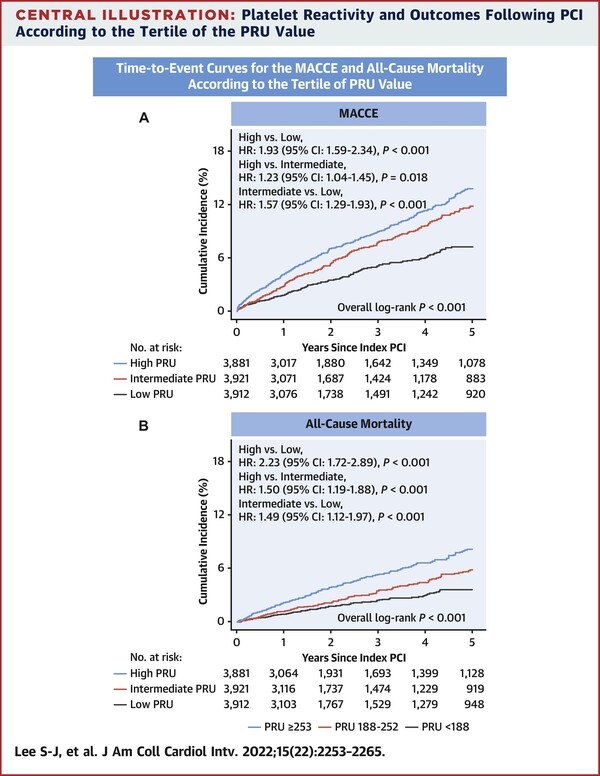Researchers at Severance Hospital have discovered a standard value to predict the incidence of complications and the association of mortality as a reference value for Asian patients receiving antiplatelet therapy after drug-releasing stent insertion.

Drug-releasing stent insertion is performed to treat ischemic heart disease in patients showing severe coronary stenosis. Currently, antiplatelet drugs such as aspirin and clopidogrel are administered to prevent stent thrombosis and serious complications such as myocardial infarction, cerebral infarction, and death.
However, in some patients, the effect of taking antiplatelet drugs decreases, and complications can occur. Physicians generally use the platelet reactivity unit (PRU) standard to measure the extent of platelet aggregation when using antiplatelet drugs but this standard is more appropriate for Westerners.
Asians have different physiological characteristics of platelets than Westerners, regarding the frequency of complications even if they suffer from the same disease. However, there was no reference value established for Asians so it was difficult to establish a treatment strategy.
Accordingly, Professor Kim Byeong-keuk and Lee Seung-jun at Severance Cardiovascular Hospital measured platelet cohesion after antiplatelet therapy in 13,160 patients who received drug-releasing stent insertion at 32 institutions nationwide.
The researchers confirmed that patients with high platelet cohesion levels had poor prognoses and high mortality after the procedure. The average value of platelet cohesion shown by Western patients was 188, but Asian patients showed a higher overall score of 218. In addition, Asians confirmed that when the platelet cohesion value exceeds 252, the probability of fatal complications such as myocardial infarction, cerebral infarction, and death increases significantly.
After analysing the data, the researchers observed that Asian patients had a higher platelet aggregation than Western patients, but the incidence of complications was lower, thereby establishing a standard value for stent insertion in Asians. This study was also the first to identify that the incidence of hemorrhagic complications does not increase even if platelet aggregation is low in Asians.
The research team also pointed out that the higher the platelet cohesion, the higher the frequency of ischemic complications like myocardial infarction and cerebral infarction, and the higher the mortality rate.
"The criteria for Asian drug-releasing stent insertion, which was only suggested as an academic theory previously has been proven with this study," Professor Kim said. "This newly established standard has now made it easier to predict prognosis and develop patient-specific treatment strategies."
The results of this study were published in the JACC-Cardiovascular Interventions.
Related articles
- Severance leads domestic arrhythmia treatment with patient cases surpassing 25,000
- Severance, Harvard improve accuracy of biliary cancer liquid biopsy by 1.3 times
- Severance Hospital tops industry-wide customer satisfaction index for 2 consecutive years
- Severance Hospital has performed over 400 ABO incompatible kidney transplants
- Severance Hospital expands AI voice bot service for patients

